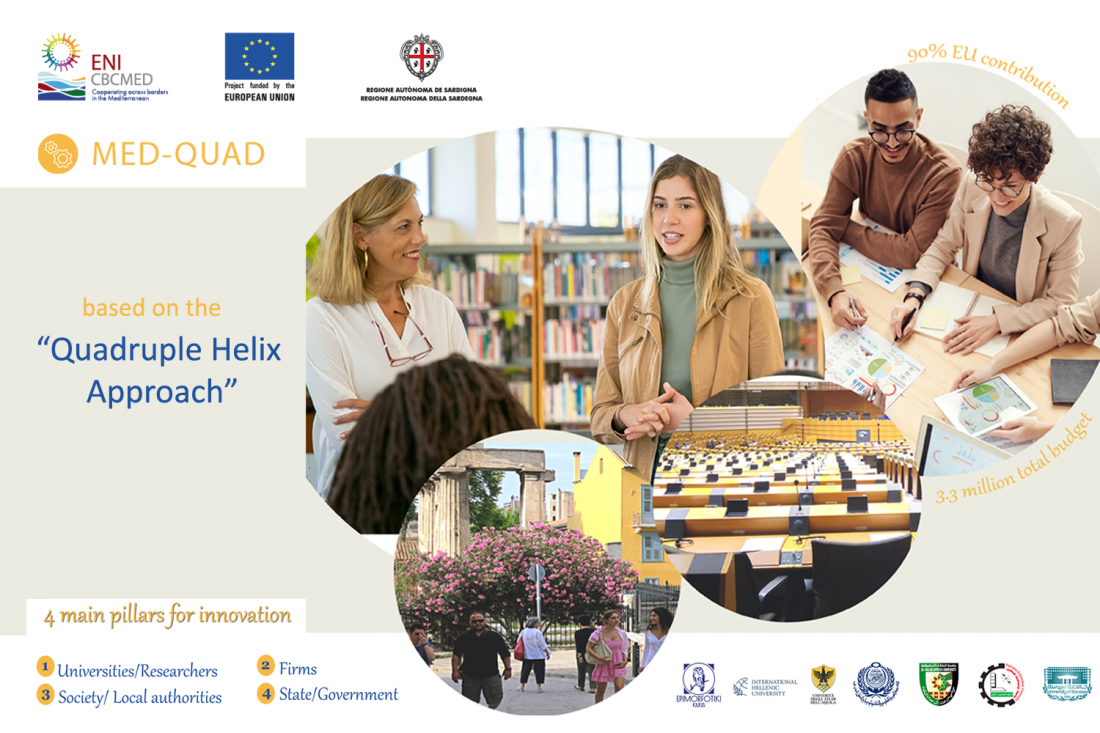Le projet MED-QUAD met en œuvre l'approche "quadruple hélice" pour soutenir l'innovation et le développement local durable

Ce contenu est disponible uniquement en anglais
The keystone of the MED-QUAD project is the "quadruple helix" (QH) approach. Based on the latter, the project's partners will implement actions to support innovation and sustainable local development.
Though, what is exactly the" quadruple helix" approach?
It consists of four components: universities/research community, businesses, (local) administration, communities (citizens). The QH model is based on the awareness that government, businesses, academia and citizens, will be able to align goals, amplify resources and accelerate progress by joining forces. The model offers a vast opportunity in innovation and sustainable local development, but the four components need to acquire competences for stimulating long-run, endogenous, economic growth.
In order for the four components to cooperate, they need to find, or even better, to build up, a place to discuss the problems, propose possible solutions and define a methodology for implementing the activities identified as those capable of stimulating and exploiting the potentials of innovation. To achieve a sustainable result, the components need to build trustworthy relations through arrangements that may be implicit (trust culture) or explicit (formal contracts) but emphasize, either way, on the social character of the cooperation.
Thus, the main goal of the "quadruple helix" approach and the MED-QUAD project is the cooperation between the key players that promote innovation, i.e. higher education institutions/research community, state, business and society. The ultimate goal is to create the conditions for more effective interaction for the benefit of local communities.
MED-QUAD got inspired by the experience that the University of L'Aquila and the Region of Abruzzo (Italy) have acquired. Following the catastrophic earthquake in the region, these actors collaborated (together with government, businesses and local/regional actors), designed and implemented innovative applications, creating in practice a quadruple helix.
Considering the above actions in Italy, as an example of good practice, the "Quadruple Helix" model adopted by the MED-QUAD project is multi-centric. It integrates previous approaches by focusing on the models having on the epicentre the factors University/Firms and University/Local communities and the user-centred model.
This new perspective focuses on digital innovation wherein the concept of "embeddedness" is introduced to mark the increasing challenge to integrate the firms into their surrounding communities so as to assure the absorption of their exploitable knowledge. The MED-QUAD project aims to turn higher education institutions into civic universities and bring universities "inside" the city to collaborate with the local community rather than coexist. In this way, it seeks to create a socially aware university, which will have a topocentric strategy for connecting with the local community. Municipalities and Regions are recognized in the project as the central bodies of the local community, which is why, in addition to the corporate structure, 3 municipalities participate as associated partners.
The project expected results can be classified into three main categories:
- Innovative approaches, strategies and tools, for creating a good ecosystem of innovation that, tailored to the specific characteristics of each territory, will be able to boost innovation.
- Methodologies and means for enhancing competences, capacities and skills of the decision- and policymakers in the local and national governmental departments in charge of territorial and economic development.
- Concrete examples of methodologies and tools application.
Stay tuned to the MED-QUAD project through the webpage to learn more about the socially aware university and the project’s target groups, based on the “Quadruple Helix” approach, in future articles.







